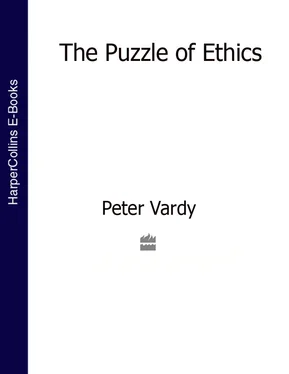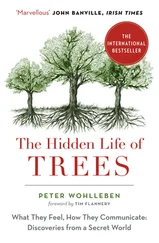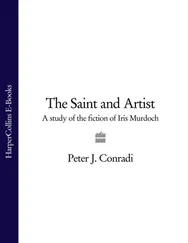The position of proportionalism is well put in John Macquarrie’s A New Dictionary of Christian Ethics (Blackwell, 1991, p. 392):
Perhaps the most divisive debate in contemporary Catholic moral theology concerns the existence and grounding of universally binding moral norms. The Scholastic moral theology of the manuals held that certain acts were intrinsically evil on the basis of the act itself, independent of the intention, circumstances and consequences. Revisionists maintain that the evil in acts such as contraception or even direct killing is not moral evil but pre-moral evil which can be justified for a proportionate reason.
The distinction between pre-moral and moral evil is central to the proportionalist position. Bernard Hoose, the leading British advocate, in his book Proportionalism (Georgetown University Press, 1987, p. 51), says that:
An evil like pain, death or mutilation is, in itself, pre-moral or non-moral, and should never be described as ‘moral’. It is the act as a whole which is either right or wrong, and it is the person, or the person in his or her acting, who is morally good or morally bad.
A distinction has to be made between acts which are good and acts which are right – and this distinction, proportionalists maintain, is often not made. A person may have a good intention but may be able to achieve that intention only through an act which is considered to be, in itself, evil. The proportionalists hold that it is possible for an action, in itself, to be wrong, whilst based on the actual situation in which the action is done the action may be morally right.
The American proportionalist, Philip Keane, puts the position clearly:
When a truly proportionate reason is present in an action so that the action is morally good, the human will is clearly not morally intending the pre-moral evil in the action, even if the pre-moral evil must be done as a means to the pre-moral good. Hence proportionate reason is ultimately a more accurate indicator of what the person is actually doing in a complex human action than is the external relationship of the various pre-moral aspects of the action.
A separation is being made distinguishing the different intentions of a human being who acts:
Part of the issue here is whether psychological intention is to be distinguished from moral intention. Surely a doctor who amputates a limb to save a person’s life has to remove the limb. But does he or she morally intend the evil in the amputation? ( Theological Studies , 42, 1981, p. 275)
Proportionalists seek the right thing to do in the particular circumstances. Unlike advocates of situation ethics, they affirm that there are non-moral goods and evils, but they maintain that the circumstances need to be taken into account in deciding whether a non-moral evil is also a moral evil. Killing, theft or contraception (if one is a Catholic) may be morally good in certain circumstances. As Bernard Hoose puts it:
If what is morally good is what is morally right and what is morally bad is what is morally wrong, we shall have to revise an awful lot of our thinking in moral matters. Some of the people who burned heretics were probably morally good in such actions. Are we to assume, therefore, that the burning of heretics was morally right? Must rich benefactors seeking admiration stop giving money to the poor? Surely they should change their attitude, but continue to give their money (p. 63).
Those who support situation ethics and proportionalism both maintain that love or agape is the only criterion for moral goodness or badness. However proportionalists refuse to accept the view of situation ethicists that love can make a wrong action right. As Bernard Hoose puts it:
An action born of love can be wrong, while an action not resulting from love can be right (p. 63).
Proportionalists have difficulty in determining how one judges whether a given situation is sufficient to generate a proportionate reason for performing what would otherwise be an evil act. It would appear that what is needed is something like the Utilitarian hedonistic calculus to try to calculate proportionality – yet proportionalists reject this. Nevertheless it seems difficult to avoid the conclusion that the choice lies between a form of calculus and individual intuition as to the ranking of various goods. Neither position seems satisfactory. Bernard Hoose maintains that the judgement is made taking the consequences into account but without any formal method of calculation; however, this approaches a form of intuitionism which can seem very individualistic. Generally we will know that there is no proportionate reason that will justify lying, theft, etc. and the proportionalist accepts this. However the proportionalist maintains that there may be such reasons and that the individual will recognise the situation when it occurs. He or she weighs up the intrinsic evil of lying, theft, etc. and balances this against the consequences.
Proportionalism has for long been in use in Catholic moral thinking in the issue of Just War, but as long as it remains condemned by the Vatican (as was re-confirmed in the document ‘Veritatis Splendor’ issued in October 1993) it is unlikely to make significant progress within the Church in other areas. However, as has been seen earlier in this chapter, it is clear that Aquinas does allow exceptions to the secondary precepts which are the basis for moral rules in the Catholic tradition, so it may be argued that proportionalism is closer to the mainstream Catholic tradition than the rather more conservative and restrictive view supported by this Church’s Magisterium at the present time.
Questions for discussion
1 What do you understand by the theory of a natural moral law?
2 Can the basis of natural law be located other than in social convention?
3 What are the strengths and weaknesses of basing ethics on natural law?
4 How might natural law be used to deal with the following ethical issues: (a) contraception, (b) abortion or (c) homosexuality?
5 On a natural law approach, how might it be argued that it would be wrong for a woman to make love after she had a hysterectomy or after her ovaries were removed?
6 Would Aquinas support the Divine Command theory of ethics?
7 ‘In the absence of any agreed view of human nature, natural law theory is useless.’ Do you agree with this statement and, if so, why?
8 Would the natural law approach maintain that if one uses reason then one is acting morally? What would be the arguments for or against such a view?
9 Can an action be wrong yet good? How?
10 What philosophic arguments might be used to reject proportionalism?
FIVE
Kant and the Moral Law
In the history of moral philosophy, few names deserve greater prominence than that of Immanuel Kant (1724–1804). He lived a totally uneventful life in Königsberg, yet his small book Groundwork of the Metaphysics of Morals (1785) is of central importance for any serious student of ethics as is the Critique of Practical Reason. Kant says that his aim in The Groundwork was to establish
a completely isolated metaphysic of morals which is not mixed with any theology or physics or metaphysics.
First, some definitions are needed: A statement is analytic if the predicate is included within the subject – thus ‘all spinsters are female’ is analytic as the meaning of the subject (spinster) includes the predicate (female). Analytic statements are necessarily true – they must be true because their truth depends on the way words are used and it simply would not make sense to say they were not true. The statement is also a priori which means that its truth is known independent of experience – we do not have to undertake a survey to determine that ‘all spinsters are female’ is true.
Читать дальше












